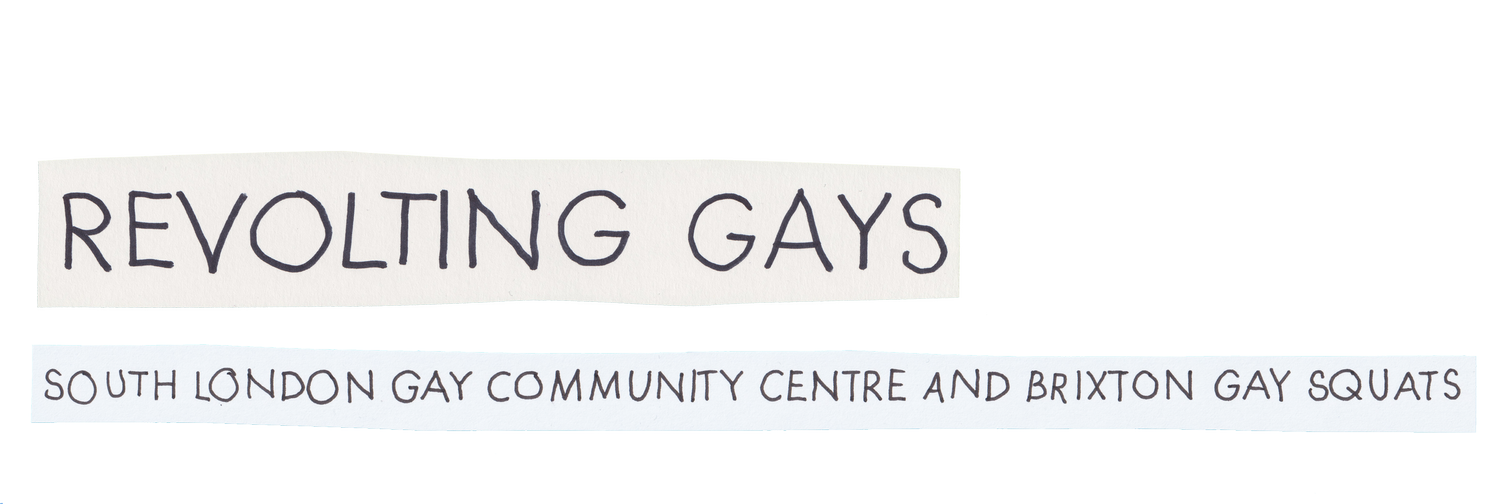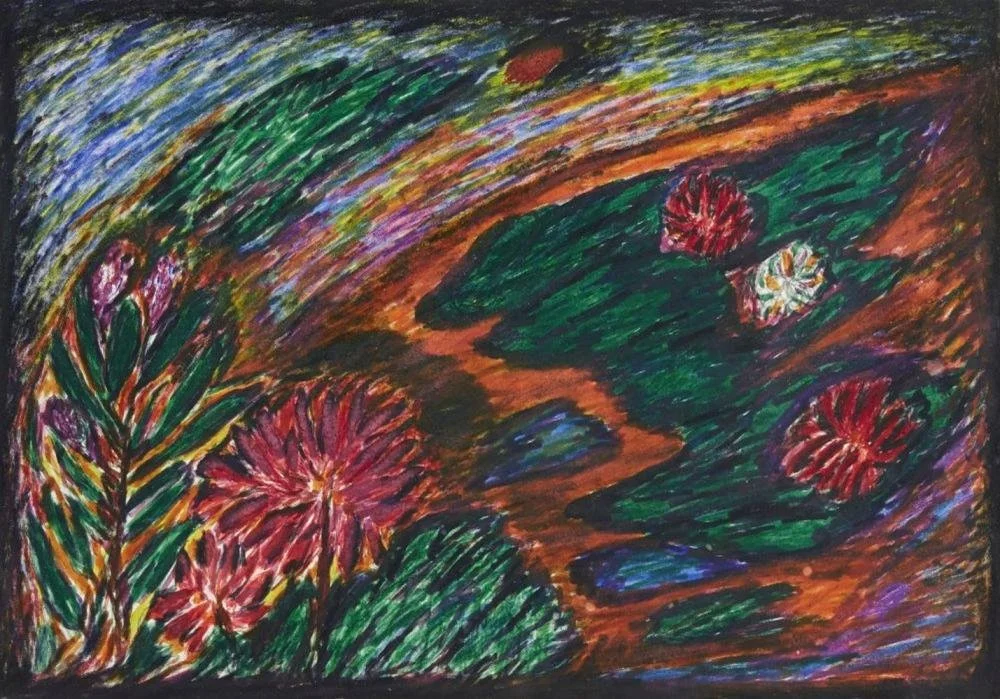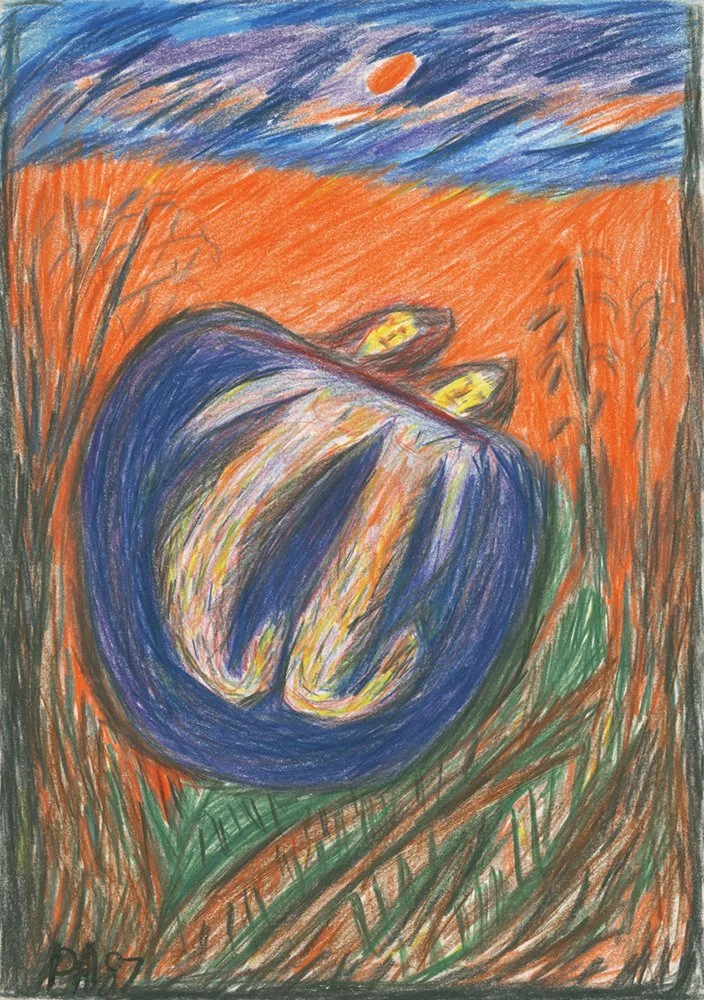Painting by Pearl Alcock, Celebration of the Night, (detail) 1987
Places to socialise for LGBT+ people in the 1970s were rare. At the northern fringes of Lambeth there were the overcrowded bars of the Royal Vauxhall Tavern and the Elephant and Castle with occasional drag shows and, according to Alex Beyer, gay skinhead gatherings at the Union Tavern on Vassall Road. Over the border in neigbouring Southwark the Father Redcap was the main entertainment centre until it was closed down by the police in 1974 for keeping a ‘disorderly house’. The police had spotted gay men dancing together.
The position for black gay men was even worse than for their white counterparts. Black people experienced deep seated racism in their daily lives throughout the 50s, 60s and 70s with pubs, cafes and landlords turning people away. The Windrush generation were among the first to experience this rampant racism. Black gay men also faced racism on the gay scene and rejection by black 'communities'.
Pearl Alcock’s art as shared by Queer Britain
To address this state of affairs blues parties and shebeens were established during a time of shocking levels of racism. They were unlicensed and illegal but because of racist white-run establishments they were often the only spaces where black people could socialise to share, celebrate and enjoy black culture.
The house parties that grew up in response were, for the most part, open practically all night and visitors could buy whatever drink they wanted and bring along their own food. Many squats, especially along the northern stretch of Railton Road, became the site of blues parties with drinking, music, ganja and carousing spilling out onto the streets creating a lively, carnivalesque atmosphere of spectacle and pleasure. Occasionally there would be outbreaks of violence as with any crowd on a boozy and druggy night out on the town.
Malcolm Greatbanks and John Lloyd have clear memories of socialising in a shebeen on Atlantic Road just off Railton Road. Run by straight black people with a black clientele there was a remarkable lack of hostility towards the two gay customers in spite of them wearing badges clearly proclaiming their sexuality and dancing together. Perhaps in a social space were ‘anything goes’ being gay was simply taken on board as one among many pleasure-seeking activities to indulge in. The Atlantic public house (now the Dogstar) almost opposite this shebeen shared the same attitude even to the extent of customers signing a petition in support of the South London Gay Community Centre's general election candidate. This accepting attitude towards gay people was not shared by the police when they raided the shebeen. Malcolm and John were given a name to juggle with as they were bundled out of the place by the police: “Come on, Mary. Out you go.” Machismo and misogyny rule!
Mary Evans Young and Derek Evans’ experience of shebeens:
"We were regulars at the Blue Lagoon, at least we think that was its name, a cafe situated in 'The Triangle' where Railton and Mayall Roads met back-to-back - gateway to ‘The Frontline’. Specialising in curried goat, jerk pork, rice and peas it was a popular gathering place at night, and even busier when people emptied out of the pubs.
Originally a double-fronted shop, the property had large windows draped with net curtains and always steamed up, but with the harsh fluorescent lighting it was easy to see people inside sitting at Formica tables enjoying the food. A large hand-written notice in the window read ‘No drugs allowed'.
Pearl Alcock’s artwork included in the 1990 London Fire Brigade calendar. Image provided by Marilyn Rogers
One night we went in the Mayall Road back entrance and were shown down to the basement, a semi-dark room with very little furniture. There were a couple of women but mostly men standing around chatting and drinking to a background of reggae music. We were asked if we wanted a drink but the only bottles on show behind the bar were Lucozade, lots of bottles of Lucozade. We knew that if we really wanted liquor and 'ganja' (cannabis) we just had to ask.
One evening, we were eating in the cafe with a friend of ours, Steve Morrison, a producer for World in Action, the investigative current affairs programme, and were surprised when the owners invited us to a private party in their flat above. We were shown into a large living room and were taken aback that virtually everybody there was white male, many in suits and all looking very straight. We can only speculate why we were the chosen ones - they thought we'd fit in!
We don’t remember any meaningful conversations but we do remember whispering to each other, ‘They’re all plainclothes cops!’ Our suspicions were confirmed when the streets outside became congested with police cars and vans, blue lights flashing. Many of the guests rushed to the windows to look. Steve was very frustrated - he was keen to go down there, find out what was happening. We were advised not to; the basement was being raided.
The party came alive; music turned up, the conversations livelier, and lots of laughter. We left, feeling deflated and sickened at what we’d witnessed."
Photo of Pearl Alcock from The Brixton Society
One shebeen had sprung up on Railton Road to make life a little more exciting in a drab and inhospitable environment. Pearl set up a shebeen in her basement flat at 103 Railton Road to cater specifically for black gay men using one of her rooms as an improvised bar buying in a stock of beer and spirits with an improvised sound system blaring away.
Photo of Pearl Alcock from Brixton Library twitter
Pear Alcock was a robustly built black bisexual woman who had moved to London from Jamaica in her twenties. After working first as a maid by the 1970s she had opened a dress shop on Railton Road in Brixton and later ran a cafe and bar. Following the 1985 riots both her shop and bar failed and she found herself on the dole. Unable to afford a birthday card for a friend she drew one which launched her career as an artist. She was described as a 'visual poet' and her work was included in Tate Britains's first exhibition of 'Outsider Art' in 2005. But what people remember Pearl most for in the 1970s is the gay shebeen that she ran from her flat. Even though It was set up for black gay men white gays were welcomed as guests. This place existed as a living refutation of the claim often made by black political radicals at the time (but not now?) that homosexuality was a white man’s disease and colonial in origin. It was also argued by some black radicals and revolutionaries that those who strayed sexually into white man’s territory were traitors to their race for not producing black children. Despite all of this, which mostly fell on deaf ears, the need for places to socialise was great given the double prohibition of racist white-owned establishments and castigation by the heterosexual black 'community'.
Among others a local gay vicar was welcomed as a guest as well as other white men and Pearl’s place constituted the only gay venue in Brixton in which black gay men could feel at ease. It was conveniently situated near the gay centre and stood almost opposite the George public house. Rumour has it that sweet revenge came later for Pearl when, standing outside her house during the Brixton uprising of 1981, she contemplated the burnt out ruins of the George with a smile on her face for she suspected that the landlady, Mrs. Old, had snitched on her to the police and was the source of all her trouble and strife with the law.
George Melly visiting Pearl in the Inside the Outside documentary








